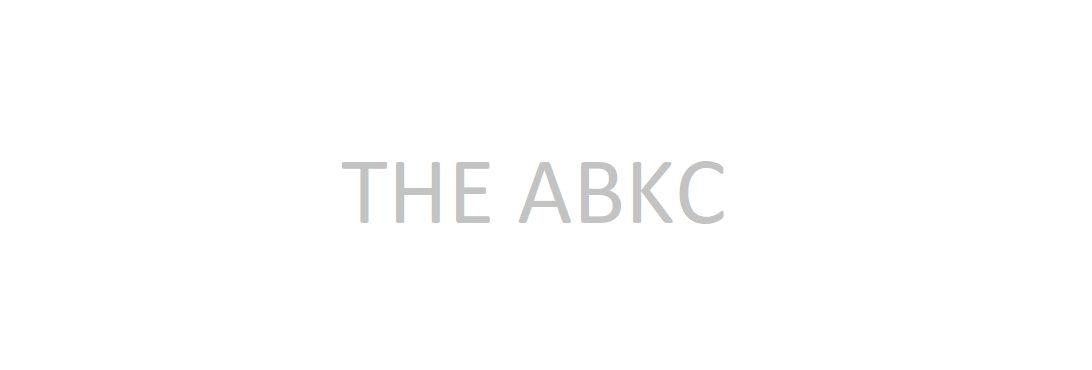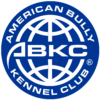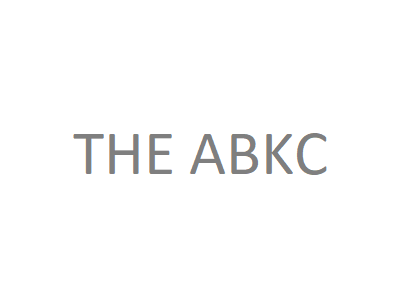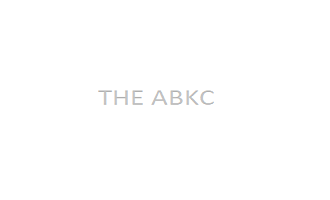American Pit Bull Terrier

The American Pit Bull Terrier has been around for over 150 years. Originally designed to be the ultimate gladiator, the American Pit Bull Terrier was bred to be a physically active, agile, and tenacious breed of great power, athleticism, and musculature. Designed in England, Ireland, and Scotland during the nineteenth century by dog fanciers looking for a dog that exhibits the tenacity and gameness of the terrier combined with the strength of the Bulldog, the American Pit Bull Terrier is personalized with all of the qualities of a great warrior: power, courage, and tenderness with its loved ones. These qualities make the American Pit Bull Terrier a very versatile breed once sought after as a gladiator, catch dog, hunter, to drive cattle, and loyal family companion. Today the breed has evolved into the ultimate companion and competitor in many performance and conformation events.
For over a century the American Pit Bull Terrier has maintained breed type true to its athletic roots and any deviation that may impair its ability to perform its traditional work, or have an effect on the health and welfare of the dog should be considered a fault; and the seriousness of this fault is measure by its degree of effect. Any Characteristics that clearly indicate impurity or crossing of other breeds is not tolerated.
The American Pit Bull Terrier is a powerful and athletic dog of medium size, gracious and agile with a solid build, short and smooth coat, and well-defined musculature without being overdone or appearing bulky, nor fine-boned and rangy. The body is slightly longer than it is tall, giving special consideration to bitches that may be a bit longer in body than males. The American Pit Bull Terrier must possess the functional capability to serve as a catch dog that can hold, wrestle, and breathe easily while performing its task, making balance and harmony of all parts fundamental to breed type.
Serious Faults: Any unproportioned or overdone characteristic that may interfere with physical or working ability. Example: too short of leg, excessive bone, massive head or massive body.
The American Pit Bull Terrier is a highly intelligent terrier breed exhibiting confidence, a zest for life, enthusiasm, and an exuberant willingness to please; this making the American Pit Bull Terrier an excellent family companion with a noted love of children. The breed does exhibit some level of dog aggression; hence making it is imperative that owners carefully socialize and obedience train the dog. The APBT is extremely friendly, even with strangers; therefore, any aggressive behavior toward humans is highly uncharacteristic of the breed and highly undesirable.
Disqualifications: Viciousness or extreme shyness.
HEAD:
• The chiseled and large, bricklike shaped, and well-proportioned head of the APBT exemplifies breed type; and exhibits the appearance of strength, elegance, and character while remaining proportioned to the body.
• Medium in length, flat skull broadest at the ears; well chiseled with pronounced cheek muscles and tightly fitting skin free from wrinkles.
• Skull and muzzle are parallel and joined by a well-defined, moderate deep stop.
• Ears should be set high on the head and can be “rose” or “half-prick”. Ears can be cropped or natural; prick or flat ears not desired.
• Eyes shape is oval to almond shape, low down in skull and set far apart. Round eyes are undesirable and bulging or protruding eyes are a fault.
• Eyes – All colors equally accepted except albinism (pink to red) which is a disqualification. Blue eyes, and lack of pigment around the eyes are undesirable.
• Visibility of haw should be minimal.
Faults: Overly visible haw. Both eyes not matched in color. Bulging or protruding eyes.
Disqualifying Faults: Albinism eyes.
• Muzzle – Medium in length, broad in width, and deep. Length to be shorter than the length of the skull with a ratio of 2:3. Slightly tapers from the stop to the nose and slightly falls away below the eyes. The topline of the muzzle is straight, tight fitting lips, and well developed under jaw.
Faults: Muzzle too long or snipey; weak under jaw; flews
Serious Faults: Muzzle so short as to interfere with normal breathing.
• Upper Teeth to meet tightly outside lower teeth in form of scissor bite.
Faults: Level bite.
Serious Faults: Undershot or overshot bite, wry bite, and missing teeth.
• Nose – Large with wide open nostrils. All colors/pigment accepted except albinism (light pink in color).
NECK:
• The neck should be muscular and moderate in length with a slight arch at the crest. The neck should be narrowest just behind the ears and widen downward gradually to blend smoothly into the withers. The neck should be free from looseness of skin.
Faults: Thin or weak; ewe neck; dewlap.
Serious Faults: Too short and/or too thick of neck that would interfere with function ability.
FOREQUARTERS:
• Shoulders to be strong and muscular with long and wide shoulder blades; and well laid back. The upper arm is approximately equal to the length of the shoulder blade and joined at an
approximate right angle.
• Forelegs – Straight, strong, and sturdy with strong, short, and flexible pasterns. Elbows set close to the body, the forelegs are set moderately wide apart, and feet straight forward turning neither
in nor out.
Faults: Upright shoulders; steep and forward scapula (shoulder blade); upper arm too short; feet either in or out; front legs bowed; down at the pasterns; elbows turned out or tied-in.
Serious Faults: Front legs too short or bowed as to interfere with normal movement.
• Feet – Should be rounded and of moderate size in proportion to the dog, compact, well arched and tight.
Faults: Splayed or flat feet; long toes.
BODY:
• Well-defined musculature without being overdone or appearing bulky, nor fine-boned and rangy.
The body is slightly longer than it is tall, giving special consideration to bitches that may be a bit longer in body than males.
• The loin short, muscular and slightly arched to the top of the croup, but narrower than the rib cage and with a moderate tuck-up.
Serious Fault: Overly massive body that impedes working ability.
• Chest – Deep, moderately wide but never wider than deep, with well sprung ribs to extend well back, then flattening to form a deep body extending to the elbows; the forechest extending to the point of the shoulder.
BACK:
• Strong and firm, slightly sloping from withers to rump or straight/level accepted with gentle short slope at rump to base of tail.
Faults: Back too long; rear higher than withers; weak or swayed topline; roached or wheel back.
HINDQUARTERS:
• Strong, muscular, and moderately broad with hock joint well bent and rear pasterns well let down turning neither in nor out.
• Muscular development, bone, angulation, and width of the hindquarters should be in balance with
that of the forequarters.
• When viewed from the rear, legs are to be straight and parallel.
• Croup should have a slight downward angle.
Faults: Hocks turning in or out; cow hocks; sickle hock; narrow hindquarters; straight or over- angulated stifle joints; bowed legs.
TAIL:
• Medium in comparison to size, low set, tapering to a fine point and extending approximately to the hock.
• When relaxed tail is to be carried low. When moving tail is carried level with the top line or in a
raised position when excited (challenge tail), but should never be carried curled over, breaking the plane of the back (gay tail).
• Tail to be clear of any kinks, knots, or any curvature.
Faults: Tail too long or too short approximately up to an inch above or below the point of the hock. Gay tail (carried over the plane of the back).
Serious Faults: Kinked, knotted, or fused tail; extremely short tail.
Disqualifying Faults: Screwed, bobbed, or docked tail.
COAT:
• Short, glossy, close, stiff, and smooth to the touch.
Faults: Curly or wavy coat.
Disqualifying Fault: Long coat.
COLOR AND PATTERN:
• All colors and patterns are permissible except the pattern merle.
Disqualifying Faults: Merle pattern.
Size:
• The actual weight and height are less important than the actual proportion of the weight to height.
To be both powerful and agile the overall balance and correct proportions are detrimental and far more important.
• Desirable weight for a mature male is 45 – 65 and for a mature female is 35 – 55 pounds.
• Height is a general and approximate guideline only:
• Males 18” to 21” at the withers.
• Females 17” to 20” at the withers.
• *Dogs over or under these weights and heights are not to be penalized as long as the weight and height are proportionate, and not massive or rangy.
Serious Faults: Excessively large, overly massive, and extremely shorter or taller than the desired weight/height as to compromise health, structure, movement, or function ability.
GAIT:
• The American Pit Bull Terrier moves with a confident and proud attitude, while keenly alive and alert to its surroundings.
• Gait should be effortless, smooth, powerful, and well-coordinated. Front reach and rear drive
should be moderate and in balance with one another.
• Legs turn neither in nor out, nor ever cross or interfere with each other.
• Dog moving on the same plane – as speed increases feet tend to converge toward center line of balance.
• Backline should remain level, with flexing to be very slight to indicate suppleness.
Faults: Rolling; pacing; sidewinding; hackney action; paddling or pounding; not moving on the same plane; legs over reaching; legs crossing over in front or rear; rear legs moving too close or touching.
FAULTS
Faults to be penalized but not disqualification for showing are:
• Both eyes not matched in color
• Overly visible haw
• Bulging or protruding eyes
• Muzzle too long or snipey
• Weak underjaw
• Flews
• Albinism nose (light pink)
• Level or flush bite
• Neck too thin or weak
• Ewe Neck
• Dewlap
• Upright shoulders; steep and forward scapula (shoulder blade)
• Upper arm too short
• Turned fronts (in or out)
• Bowed front legs
• Down at the pasterns (weak pasterns)
• Elbows tuned out or tied-in
• Splayed or flat feet
• Long toes
• Back too long
• Rear higher than withers
• Weak or swayed topline; roached or wheel back
• Hocks turning in or out; cow hocked; sickle hock
• Narrow hindquarters
• Straight or over-angulated stifle joints
• Tail too long or too short (approx. 1″ from point of hock)
• Curled tail (gay tail)
• Curly or wavy coat
• Movement: Rolling, pacing, sidewinding, hackney action, and paddling or pounding.
• Not moving on the same plane – legs over reaching, crossing over in front or rear, or rear legs moving too close or touching.
SERIOUS FAULTS
Faults to be heavily penalized but not disqualifications for showing are:
• Any unproportioned or overdone characteristic that may interfere with physical or working ability.
• Muzzle so short as to interfere with normal breathing.
• Overshot or undershot
• Wry or cross bite
• Missing teeth
• Neck too short and/or too thick
• Overly massive body that impedes working ability.
• Kinked tail; twisted tail; knotted tail; fused tail
• Overly Short tail
• Excessively large, overly massive, and extremely shorter or taller than the desired weight/height as to compromise health, structure, movement, or function ability.
DISQUALIFICATIONS
• Displaying or possessing aggressive behavior towards humans.
• Viciousness or extreme shyness
• Pink or Albino eyes
• Screwed, bobbed, or docked tail.
• Long coat
• Merle pattern
• Unilateral or bilateral cryptorchidism (missing one or both testicles)
• Unilateral or bilateral deafness (deafness in one or both ears)
• Dwarfism



